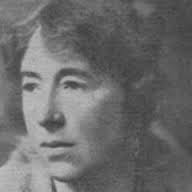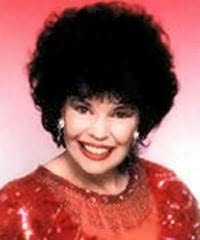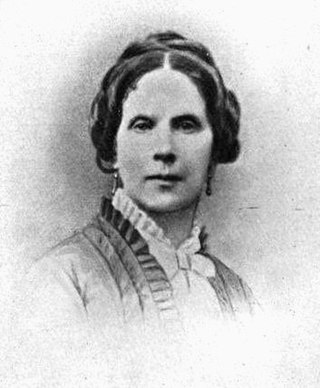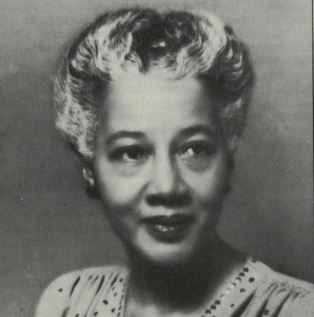Related Research Articles

Humpty Dumpty is a character in an English nursery rhyme, probably originally a riddle and one of the best known in the English-speaking world. He is typically portrayed as an anthropomorphic egg, though he is not explicitly described as such. The first recorded versions of the rhyme date from late eighteenth-century England and the tune from 1870 in James William Elliott's National Nursery Rhymes and Nursery Songs. Its origins are obscure, and several theories have been advanced to suggest original meanings.

Joyce Irene Grenfell OBE was an English diseuse, singer, actress and writer. She was known for the songs and monologues she wrote and performed, at first in revues and later in her solo shows. She never appeared as a stage actress, but had roles, mostly comic, in many films, including Miss Gossage in The Happiest Days of Your Life (1950) and Police Sergeant Ruby Gates in the St Trinian's series. She was a well-known broadcaster on radio and television. As a writer, she was the first radio critic for The Observer, contributed to Punch and published two volumes of memoirs.

George Louis Palmella Busson du Maurier was a Franco-British cartoonist and writer known for work in Punch and a Gothic novel Trilby, featuring the character Svengali. His son was the actor Sir Gerald du Maurier. The writers Angela du Maurier and Daphne du Maurier and the artist Jeanne du Maurier were all granddaughters of George. He was also father of Sylvia Llewelyn Davies and grandfather of the five boys who inspired J. M. Barrie's Peter Pan.

Sir Hugh Maxwell Casson was a British architect, also active as an interior designer, an artist, and a writer and broadcaster on twentieth-century design. He was the director of architecture for the 1951 Festival of Britain. From 1976 to 1984, he was president of the Royal Academy.
Jocelyn Henry Clive 'Harry' Graham was an English writer. He was a successful journalist and later, after distinguished military service, a leading lyricist for operettas and musical comedies, but he is now best remembered as a writer of humorous verse in a style of grotesquerie and black humour.

Sir Wilfred Thomason Grenfell was a British medical missionary to Newfoundland, who wrote books on his work and other topics.
Viola Meynell, Mrs. Dallyn was an English writer, novelist and poet. She wrote around 20 books, but was best known for her short stories and novels.

Winifred M. Letts was a writer who spent most of her life in Ireland. She was known for her poetry, novels, and plays.

Sarah Austin was an English editor, linguist and translator from German-language books. She did much to make Germany familiar to the English.

Ernest Frederic Graham Thesiger, CBE was an English stage and film actor. He is noted for his performance as Doctor Septimus Pretorius in James Whale's film Bride of Frankenstein (1935).
Annie Sophie Cory (1 October 1868 – 2 August 1952) was a British author of popular, racy, exotic New Woman novels under the pseudonyms Victoria Cross(e), Vivian Cory and V.C. Griffin.
Evelyn Ward Everett-Green was an English novelist who started with improving, pious stories for children, moved on to historical fiction for older girls, and then turned to adult romantic fiction. She wrote about 350 books, more than 200 of them under her own name, and others using the pseudonyms H. F. E., Cecil Adair, E. Ward and Evelyn Dare.

Virginia Henley, is a British-Canadian writer of historical-romance novels. She is well known for her Medieval, Renaissance and other period piece romance novels.
Herbert (Bertie) Farjeon was a major figure in the British theatre from 1910 until his death. He was a presenter of revues in London's West End, a theatre critic, lyricist, librettist, playwright, theatre manager and researcher.

Margaret Junkin Preston was an American poet and author.
Janie Hampton is a British author, best known for her biography of Joyce Grenfell and social history books The Austerity Olympics, How the Girl Guides Won the War, and an international development and women's health activist.
Charles Henry Walsh was an English footballer who played as an inside forward in the Football League for Brentford. He made one FA Cup appearance for Arsenal in 1933. Injury forced Walsh into early retirement in 1935.

Isabel Grenfell Quallo was a Congolese-born British-American domestic worker and community activist known for her involvement in the development of Druid Heights, in Marin County, California. Born in the Congo Free State, she was educated in England and then moved with her mother to Kingston, Jamaica. Marrying at 16, she immigrated with her husband to New York City in 1914. Struggling with racism and her husband's mental illness, she supported her children by working as a domestic and waitress. Through contacts in the theater district, she made the acquaintance of writer Elsa Gidlow, becoming her lover for ten years. In their last two years together, Elsa purchased 5 acres of land south of Muir Woods. She then split the property with builder and jazz musician Roger Somers, and his wife Mary, and, initially with Isabel's help, they fostered an atmosphere which would attract many of those involved in countercultural movements, active in the United States between 1950 and 1970.

Edith Chaplin Ayrton Zangwill was a British author and activist. She helped form the Jewish League for Woman Suffrage.
Mary Barnes Hutchinson was a British short-story writer, socialite, model and a member of the Bloomsbury Group.
References
- 1 2 Principal Probate Registry. Calendar of the Grants of Probate and Letters of Administration made in the Probate Registries of the High Court of Justice in England, London, England: UK Crown
- 1 2 England and Wales Civil Registration Indexes, London, England: General Register Office
- ↑ Furrowed Middlebrow. Lesser known British women writers 1910–1960 Retrieved 16 March 2017.
- ↑ Publisher's biography Retrieved 16 March 2017.
- ↑ Catalog of Copyright Entries. Third Series: 1956, p. 962. Retrieved 16 March 2017.
- ↑ Joyce & Ginnie: the letters of Joyce Grenfell & Virginia Graham, edited by Janie Hampton (London: Hodder and Stoughton, 1997).
- ↑ Joyce Grenfell (1910–1979). Biography (compiled by Judy Harris): Retrieved 16 March 2017.
- ↑ National Library of Australia catalogue under "Virginia Graham". Retrieved 16 March 2017.
- ↑ Charles R. Gruner: The Game of Humor: A Comprehensive Theory of Why We Laugh (New Brunswick/London, Transaction Publishers, 1997), p. 48 Retrieved 16 March 2017.
- ↑ Sheldrake Press (no location, nd) Retrieved 17 March 2017.
- ↑ Appreciative reader, 15 June 1950, p. 19 Retrieved 17 March 2017.